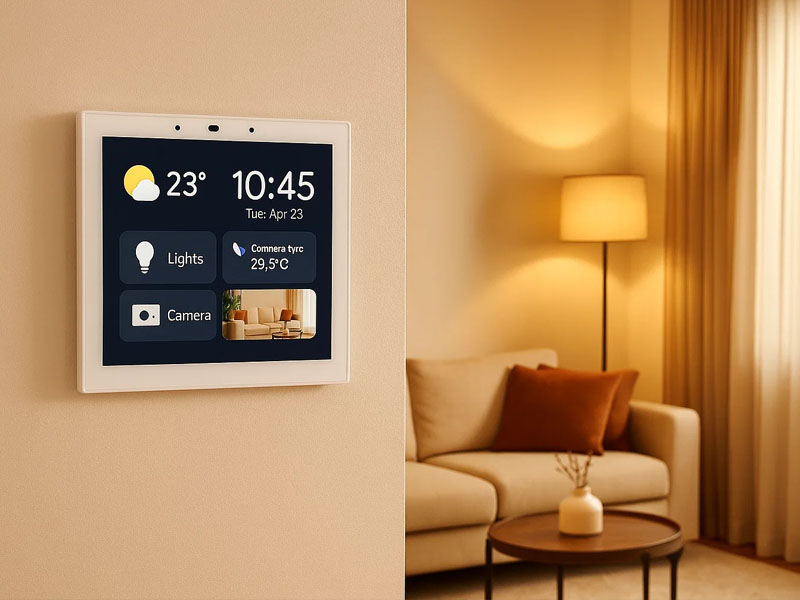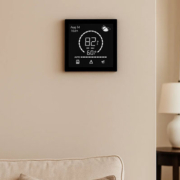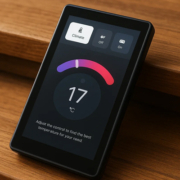How Android PoE Tablets Achieve Power and Data Transmission Through a Single Ethernet Cable
In today’s fast-paced and ever-evolving technological landscape, efficiency, simplicity, and flexibility are more crucial than ever in the design of modern devices. Android PoE tablets are a prime example of this evolution, combining the power of the Android operating system with the efficiency of Power over Ethernet (PoE) technology. These tablets offer a game-changing solution by enabling both power and data transmission through a single Ethernet cable, streamlining installations and simplifying system management. But how exactly does this work? In this article, we will break down how Android PoE tablets manage to achieve power and data transmission over a single cable, and the significant advantages this technology offers to businesses, especially in commercial and industrial environments.
Portworld, as a leading provider of smart home solutions, offers a wide range of PoE Android tablets that provide seamless integration and powerful features. Products like the SM41P, SM55P, SM08P, SM10P, and SM116P are all equipped with PoE technology, making them perfect for applications in smart homes, digital signage, POS systems, industrial control, and more.
1. Understanding Power over Ethernet (PoE)
Power over Ethernet (PoE) is a technology that allows electrical power to be sent along with data over a standard Ethernet cable (Cat5e, Cat6, or higher). In a typical network setup, data is transmitted over the Ethernet cable, while power is supplied through a separate electrical outlet and power adapter. PoE simplifies this by sending both data and power through one cable, reducing the need for extra wiring and making installations more efficient.
PoE technology works by using a PoE-enabled switch or PoE injector, which provides power to devices like Android PoE tablets. These devices receive both the electrical power and data signals through the same Ethernet connection.
2. The Components Involved in PoE Technology
To understand how Android PoE tablets achieve both power and data transmission through a single cable, it’s essential to know the components involved in the PoE setup:
- PoE-Enabled Switch/Injector: These devices are responsible for supplying both power and data to the connected device. A PoE-enabled switch is a standard network switch that also supports power transmission. Alternatively, a PoE injector can be used to add power to an existing Ethernet cable that doesn’t originate from a PoE-enabled switch.
- Ethernet Cable (Cat5e or higher): The Ethernet cable acts as the physical medium through which both power and data are transmitted. The cable can carry high-speed data (like internet, cloud access, etc.) along with sufficient power to operate devices like Android PoE tablets.
- PoE Splitter (optional): In some configurations, a PoE splitter is used to separate the power and data signals from the Ethernet cable. While not always necessary for Android PoE tablets, it is used in some setups where a device does not have native PoE support but still needs power and data from a single Ethernet source.
3. How Android PoE Tablets Benefit from Single Cable Connectivity
Android PoE tablets combine the powerful Android OS with the practical benefits of PoE technology, making them ideal for various commercial, retail, and industrial environments. Here’s how they achieve power and data transmission through a single Ethernet cable:
a) Power Delivery
The PoE-enabled network switch or PoE injector sends power over the Ethernet cable, which is used to operate the Android PoE tablet. The tablet doesn’t need an additional power adapter or separate power supply. The electrical power sent through the cable is sufficient to run the device, including the screen, processor, and other components. This setup not only reduces clutter but also eliminates the need for finding power outlets close to the installation location.
b) Data Transmission
In addition to providing power, the Ethernet cable carries data signals between the Android PoE tablet and the network, enabling communication with other devices, servers, and databases. The data may include internet access, cloud computing services, video feeds, or communication with other smart devices in the network, such as sensors or control systems.
Android PoE tablets typically feature Ethernet ports that connect directly to the network, allowing for fast, stable, and secure data communication. The seamless combination of power and data ensures that the tablet can operate efficiently without the need for complex wiring systems.
c) Simplified Installation
The most notable benefit of combining power and data into a single cable is the simplified installation. Traditionally, devices that require both data and power needed separate cables — one for power and one for Ethernet or network data. This could lead to messy installations with multiple cables running across walls, ceilings, or floors.
With Android PoE tablets, however, the need for additional power cords or power outlets is eliminated. A single Ethernet cable is all that’s required to set up and power the tablet, reducing cable clutter and cutting down on installation time. This makes it especially useful in environments where space is limited or where devices need to be placed in hard-to-reach areas (such as industrial settings, smart homes, or commercial spaces).
4. Real-World Applications of Android PoE Tablets
The ability to transmit both power and data through a single Ethernet cable makes Android PoE tablets an excellent solution for various sectors, from retail to industrial control, healthcare to hospitality. Here are some key examples of how this technology is used:
a) Retail & POS Systems
In retail environments, Android PoE tablets can function as POS (Point of Sale) systems, self-checkout kiosks, or digital signage displays. By using a single Ethernet cable to provide both power and data, these tablets can be installed quickly and efficiently, saving time and reducing wiring complexity. Retailers can place these tablets anywhere within the store or at checkout stations, allowing for easy scalability and maintenance.
For example, Portworld’s SM41P and SM55P PoE-enabled Android tablets can be used to create interactive POS systems, improving the customer shopping experience by offering real-time updates, payments, and promotions.

android tablets
b) Smart Home and Building Automation
In smart home or building automation systems, Android PoE tablets serve as central control hubs, managing devices like lighting, HVAC, security systems, and more. Their ability to be powered through Ethernet makes them ideal for installations in places where power outlets are not easily accessible. Whether used as a wall-mounted control panel or as a mobile smart device, Android PoE tablets integrate seamlessly into any smart building infrastructure.
Portworld’s SM08P, SM10P, and SM116P are excellent examples of PoE-enabled Android tablets that provide users with the ability to manage various home automation systems. Whether it’s controlling lights, adjusting climate settings, or monitoring security cameras, these devices enable seamless integration into a smart home ecosystem.
c) Industrial Automation and Control Panels
For industrial environments, Android PoE tablets offer a reliable solution for controlling machinery, monitoring processes, and displaying critical data in real time. Their rugged design and PoE capability make them ideal for use in factories, warehouses, and other industrial settings where power sources are not always readily available. The tablets can also be connected to sensors, cameras, and other devices, offering real-time data and alerts.
The Portworld SM10P and SM116P tablets are designed with industrial use in mind, providing PoE support for seamless connectivity and data integration. These tablets can be used in industrial dashboards, automated systems, and remote monitoring stations, offering reliable control and monitoring across production lines.
d) Digital Signage and Advertising Displays
Android PoE tablets are perfect for digital signage applications, where they can display dynamic content such as advertisements, schedules, menus, and more. With PoE, these displays can be easily powered and connected to the network, making them easier to maintain and manage remotely.
Portworld’s SM41P and SM55P models are ideal for digital signage solutions, providing crystal-clear display quality, reliable power, and a compact form factor that integrates well into any commercial environment. Whether used in supermarkets, malls, or corporate offices, these tablets offer an excellent platform for content management and advertising.
5. Advantages of Android PoE Tablets
In addition to simplified installation, Android PoE tablets offer several other advantages:
- Cost-Effective: Reduces the need for additional wiring, power outlets, and electrical infrastructure.
- Flexibility: Can be installed in locations where power outlets may be scarce or difficult to access.
- Reliable Connectivity: PoE ensures a stable and continuous power supply, which is especially critical in mission-critical applications.
- Scalability: Easily integrates into existing network setups, allowing businesses to scale their installations with minimal effort.
The combination of Android OS and Power over Ethernet (PoE) technology has revolutionized how tablets are integrated into modern commercial and industrial systems. By allowing both power and data to be transmitted over a single Ethernet cable, Android PoE tablets offer a streamlined, efficient, and cost-effective solution for a wide range of applications.




